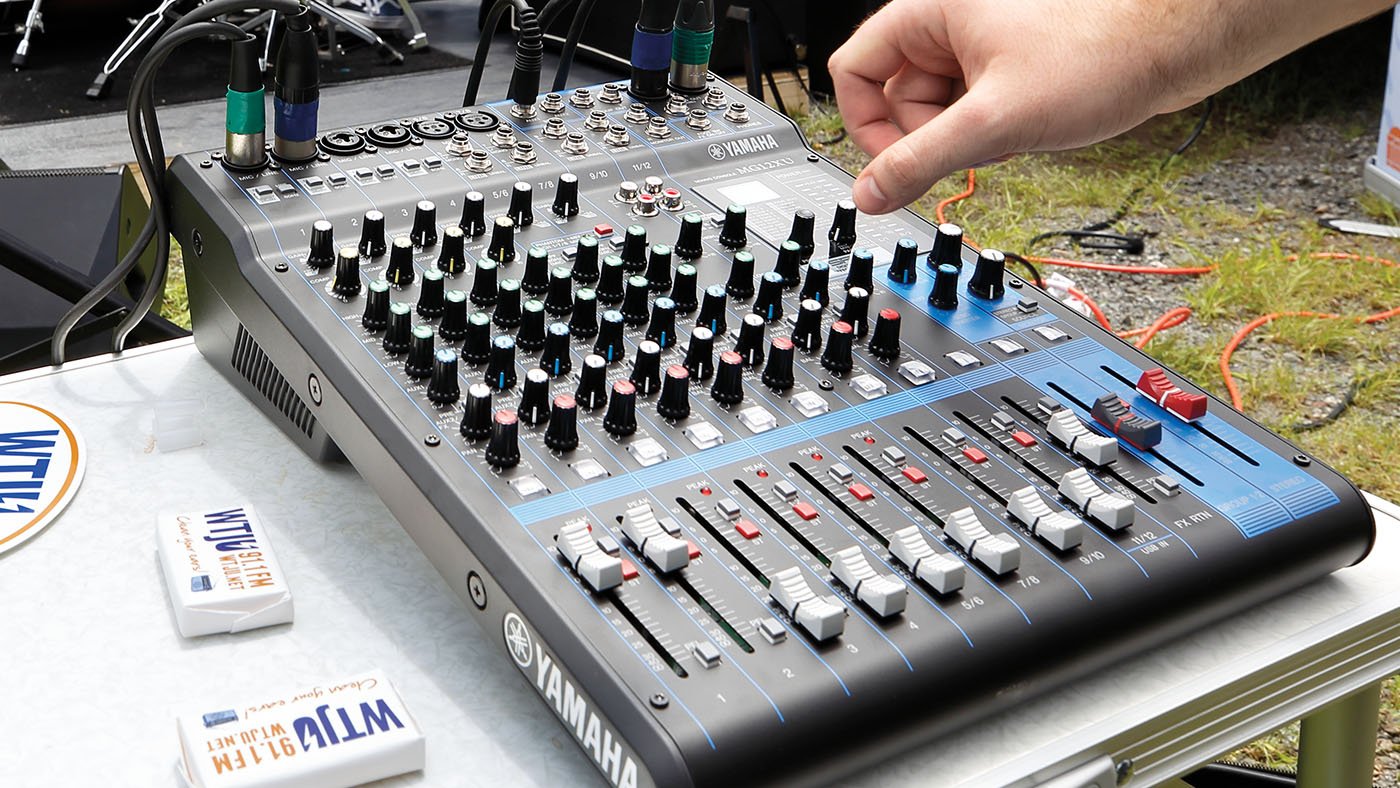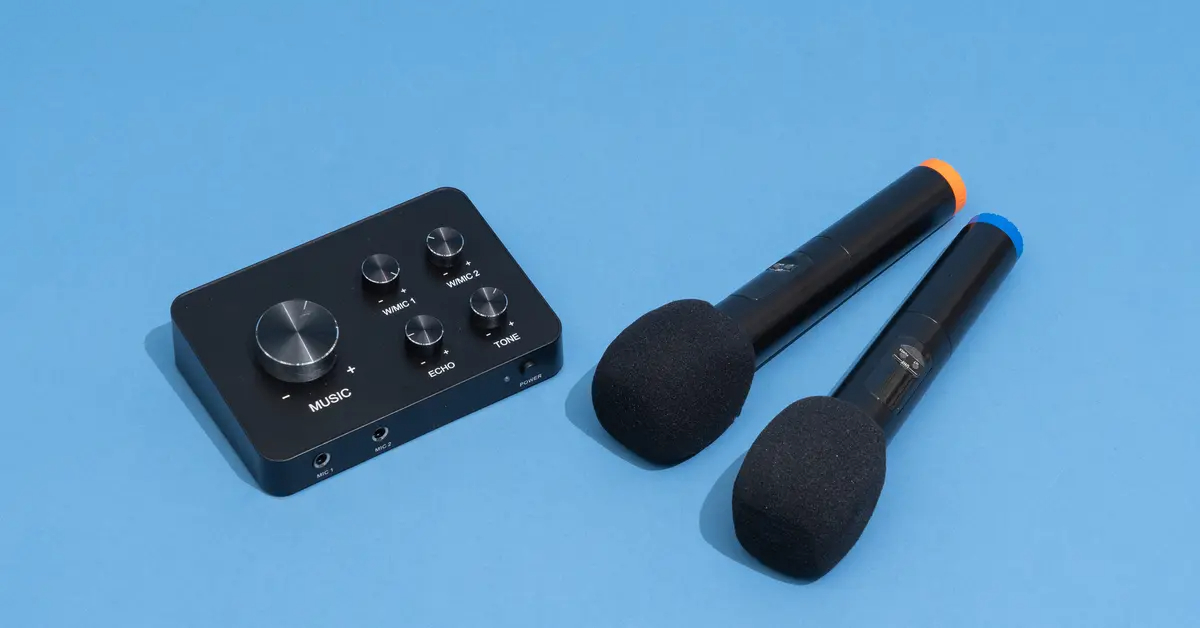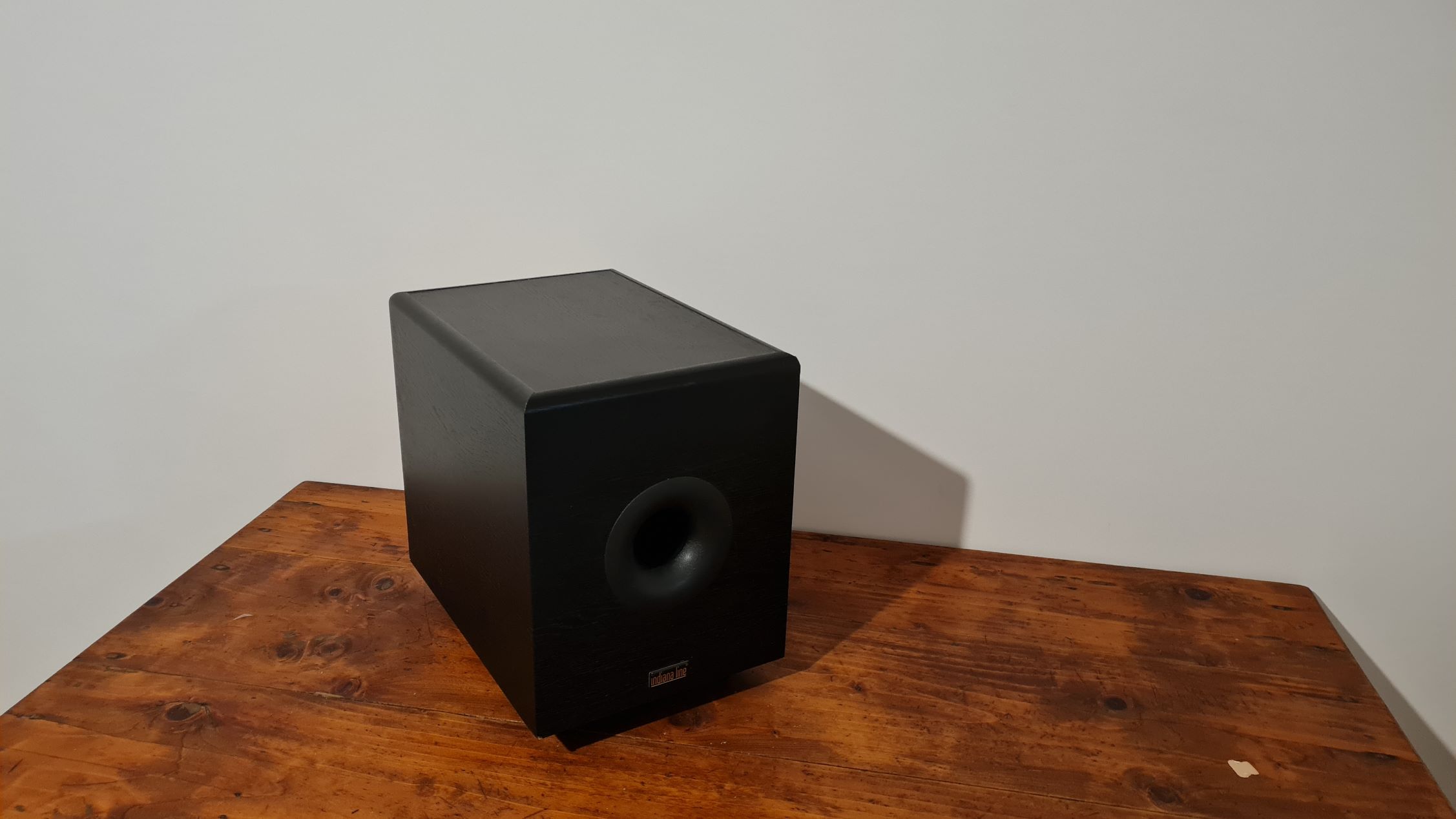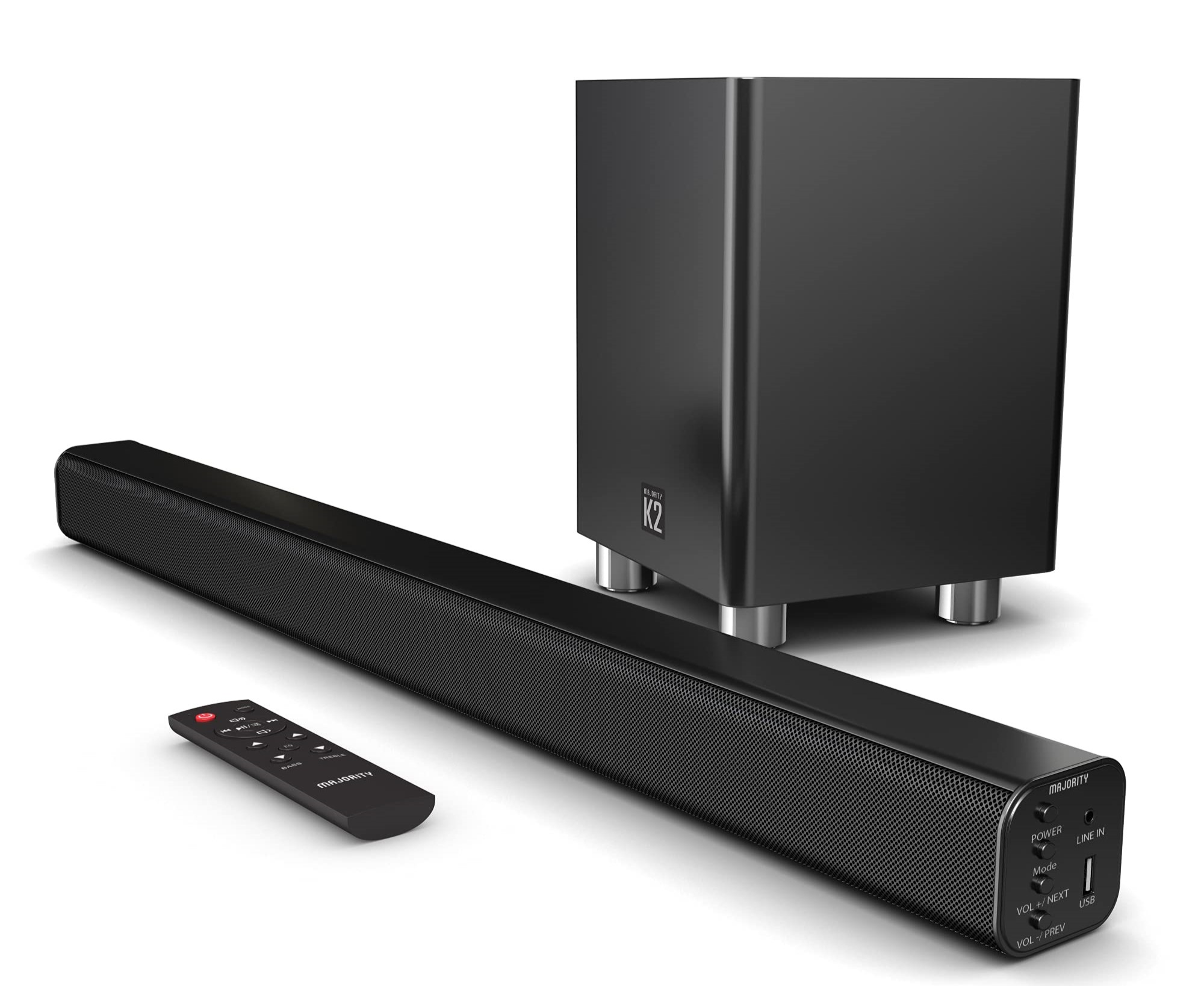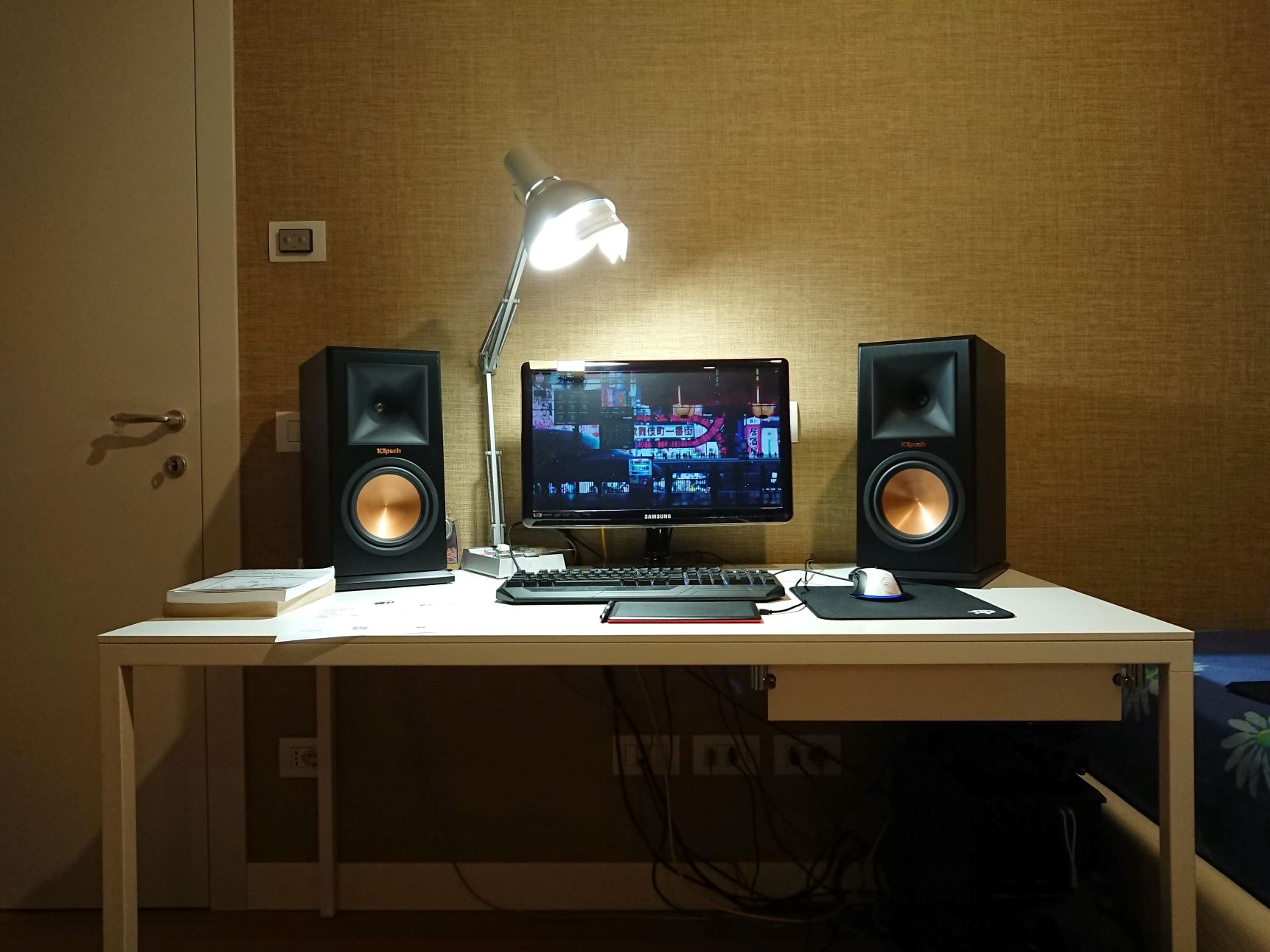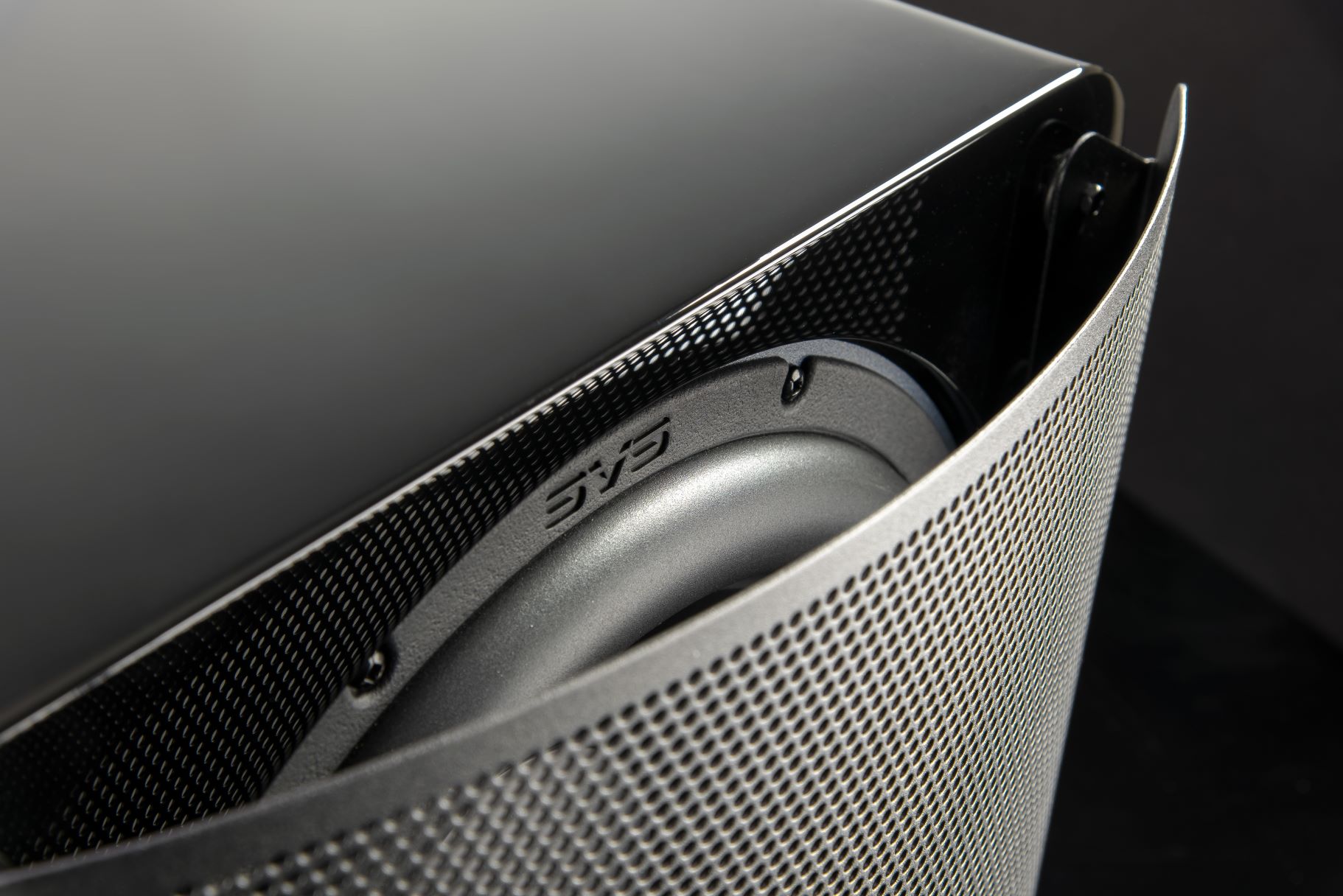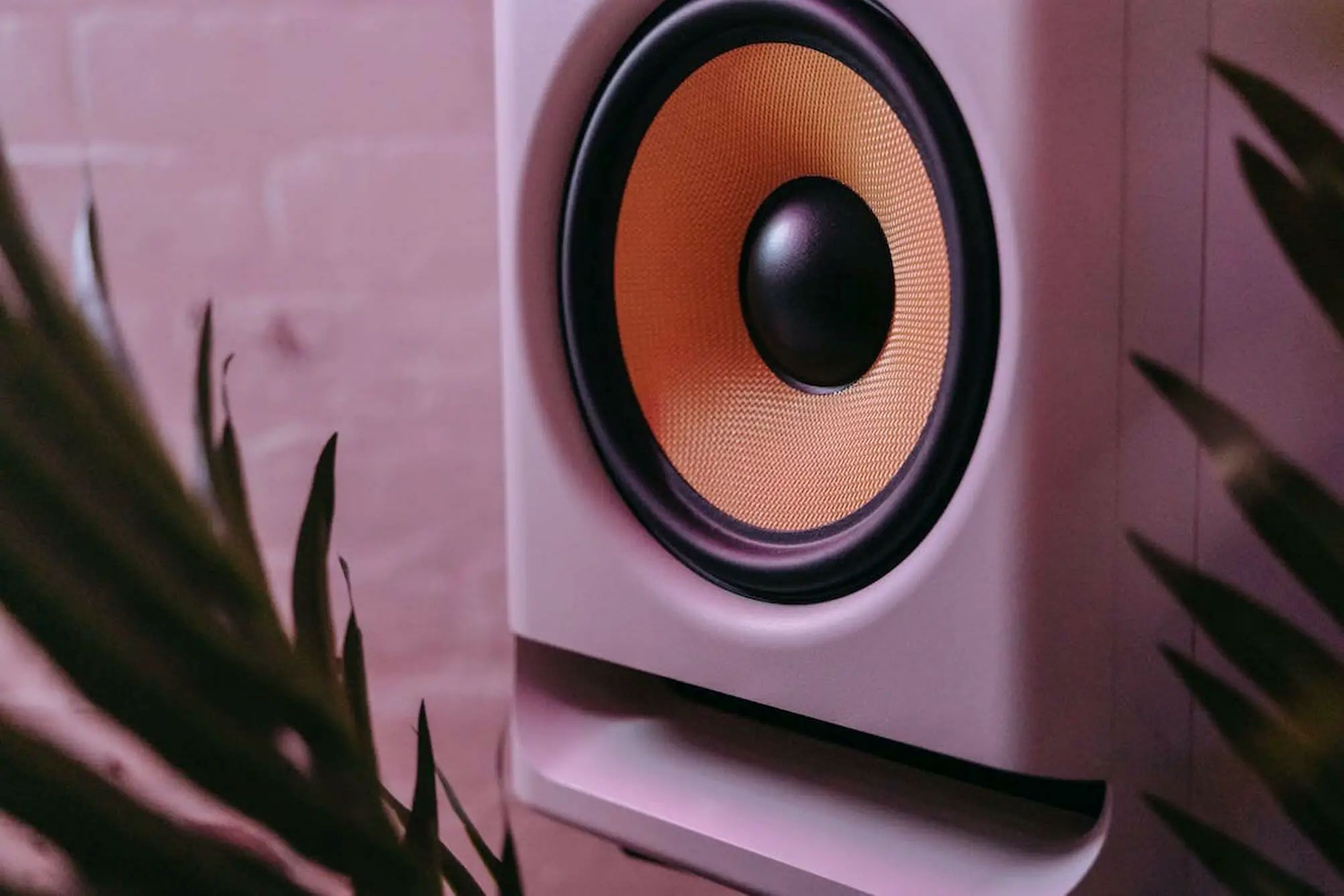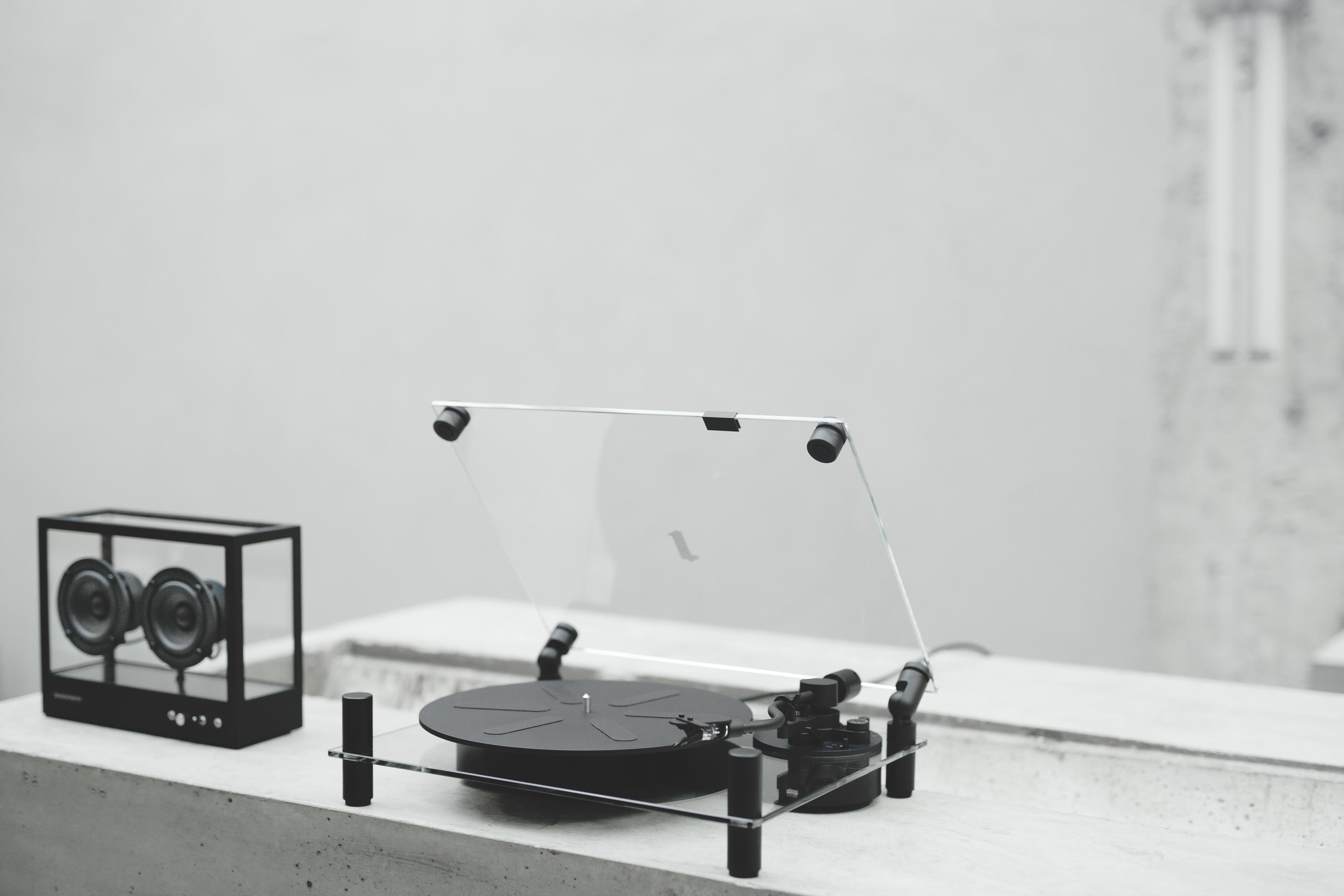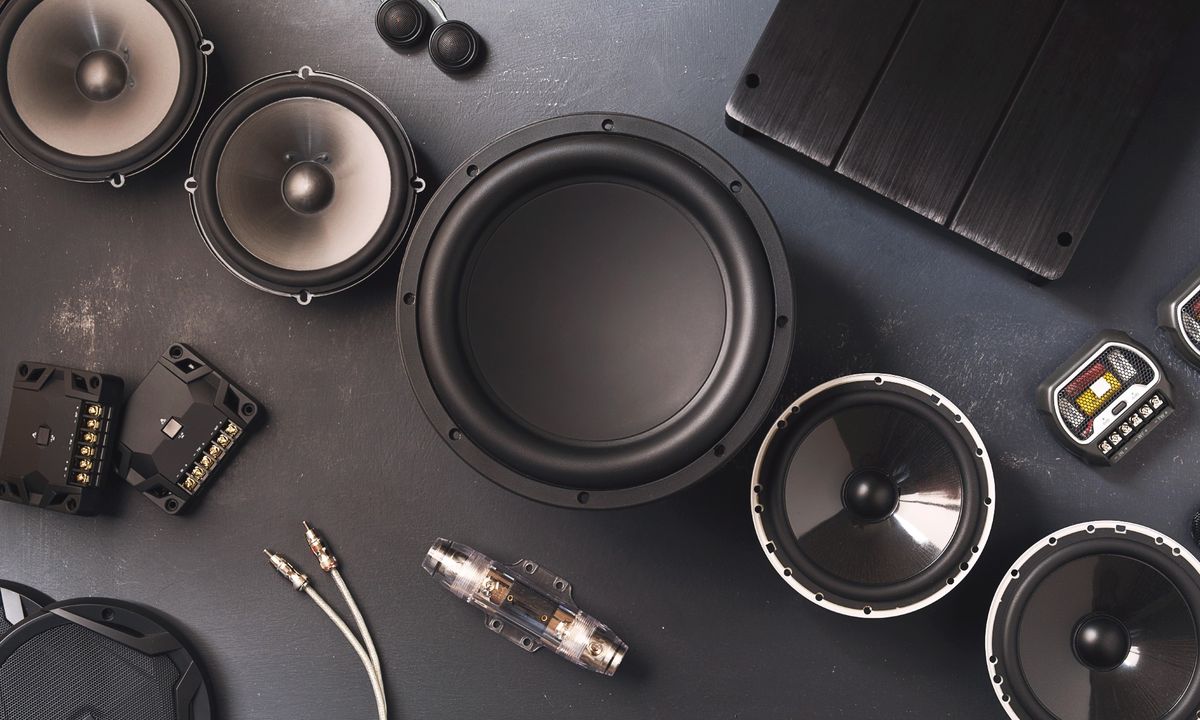Home>Devices & Equipment>Subwoofer>How To Connect Subwoofer To Bookshelf Speakers
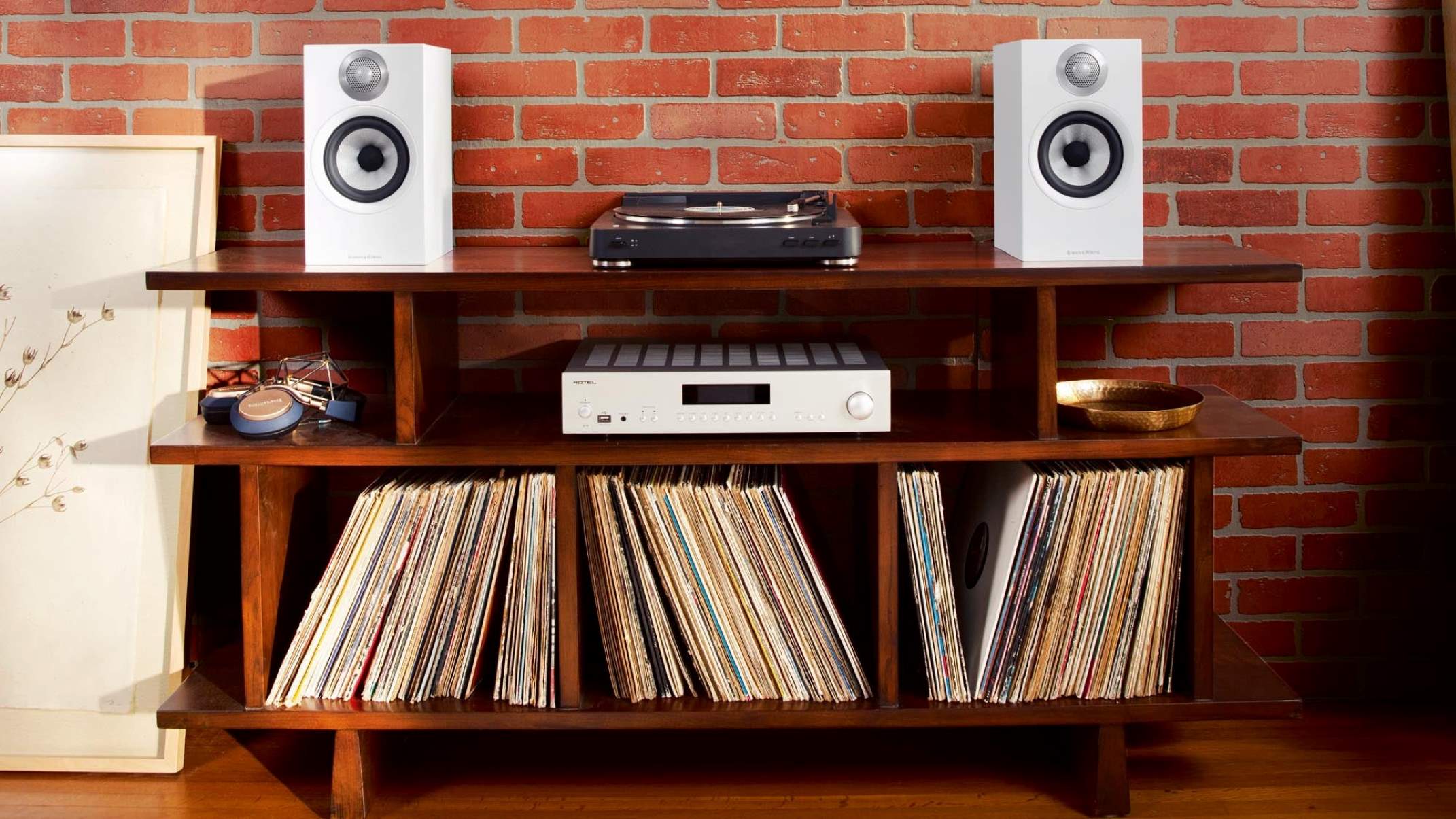

Subwoofer
How To Connect Subwoofer To Bookshelf Speakers
Published: January 22, 2024
Learn how to easily connect a subwoofer to your bookshelf speakers and enhance your audio experience.
(Many of the links in this article redirect to a specific reviewed product. Your purchase of these products through affiliate links helps to generate commission for AudioLover.com, at no extra cost. Learn more)
Table of Contents
Introduction
When it comes to creating an immersive audio experience, adding a subwoofer to your bookshelf speakers can make a significant difference. A subwoofer reproduces low-frequency sounds, adding depth and impact to your audio setup. Whether you’re a music enthusiast, a movie lover, or a gaming aficionado, a subwoofer can take your audio experience to the next level.
Connecting a subwoofer to your bookshelf speakers might seem like a daunting task, but with the right knowledge and equipment, it can be a straightforward process. In this article, we will guide you through the steps of connecting a subwoofer to your bookshelf speakers, ensuring that you can enjoy powerful bass and optimal sound quality.
Before we dive into the process, it’s essential to gather the necessary equipment. You will need a subwoofer cable, commonly known as an RCA cable, which connects the subwoofer to your receiver or amplifier. Additionally, ensure that you have the appropriate audio cables for connecting your bookshelf speakers to your audio source.
Once you have all the equipment ready, the next step is to determine the connection method that suits your setup. There are two common methods: using a subwoofer with a built-in amplifier or using a separate amplifier for the subwoofer. Each method has its advantages, so choose the one that best suits your needs and equipment.
In the following sections, we will take you through the step-by-step process of connecting your subwoofer to your bookshelf speakers. We will cover both connection methods to provide a comprehensive guide. So let’s get started and transform your audio setup into a powerhouse of low-frequency audio!
Step 1: Gather the Necessary Equipment
Before you begin connecting your subwoofer to your bookshelf speakers, it’s essential to gather all the necessary equipment. Here’s a list of items you will need:
- Subwoofer Cable (RCA Cable): This cable is used to connect the subwoofer to your receiver or amplifier. Make sure you have a high-quality RCA cable of appropriate length for your setup.
- Audio Cables: Depending on the type of connection you’re using for your bookshelf speakers, you will need the appropriate audio cables. This could include RCA cables, speaker wire, or any other connectors required for your specific setup.
- Subwoofer: Of course, you’ll need a subwoofer to connect to your bookshelf speakers. Make sure you choose a subwoofer that is compatible with your audio system and suits your desired sound quality.
- Bookshelf Speakers: If you don’t already have bookshelf speakers, you’ll need a pair to connect to your subwoofer. Look for speakers that complement the subwoofer’s capabilities and provide a balanced audio experience.
- Receiver or Amplifier: A receiver or amplifier is necessary to power both the bookshelf speakers and the subwoofer. Ensure that your receiver or amplifier has the appropriate connections for your setup.
- Power Cables: Don’t forget to gather the power cables for your subwoofer, bookshelf speakers, and receiver or amplifier. Ensure that all devices are connected to a power source.
- Documentation: It’s always a good idea to keep the instruction manuals and documentation for all your equipment handy. They can provide valuable information about specific connection methods and settings.
Once you have gathered all the necessary equipment, you’re ready to move on to the next step: determining the connection method for your subwoofer and bookshelf speakers. This will ensure that you can seamlessly integrate the subwoofer into your audio setup and enjoy enhanced bass performance.
Step 2: Determine the Connection Method
Before connecting your subwoofer to your bookshelf speakers, it’s important to determine the connection method that suits your setup. There are two common methods: using a subwoofer with a built-in amplifier or using a separate amplifier for the subwoofer. Let’s explore each method:
1. Subwoofer with Built-In Amplifier: Some subwoofers come with a built-in amplifier, making the connection process more straightforward. In this case, you will connect your audio source (such as a receiver or amplifier) directly to the subwoofer using an RCA cable. The subwoofer will then handle the low-frequency audio signals and output them to the bookshelf speakers. This method is convenient if you prefer a streamlined setup.
2. Separate Amplifier for the Subwoofer: In some cases, you may have a subwoofer without a built-in amplifier or prefer to use a separate amplifier for added control and customization. With this method, you will connect your audio source to the amplifier using an RCA cable. From the amplifier, you will then connect the subwoofer using speaker wire or another appropriate connection method. The amplifier will provide power to the subwoofer, allowing you to fine-tune the bass performance independently.
When deciding on the connection method, consider factors such as the capabilities of your subwoofer, the audio quality you desire, and the level of control you want over the bass output. Both methods can deliver impressive results, so choose the one that best suits your preferences and equipment.
Once you have determined the connection method, you’re ready to move on to the next step: connecting the subwoofer to your bookshelf speakers. This will bring you closer to experiencing a fuller and more immersive audio experience.
Step 3: Connect the Subwoofer to the Bookshelf Speakers
Now that you have determined the connection method for your subwoofer and bookshelf speakers, it’s time to connect them together. Follow these steps to ensure a proper and secure connection:
- Locate the Subwoofer Input: On the back of your subwoofer, locate the input labeled “Subwoofer Input” or “LFE Input.” This is where you will connect the subwoofer cable.
- Connect the Subwoofer Cable: Take one end of the subwoofer cable and plug it into the “Subwoofer Input” on the back of the subwoofer. The cable should fit securely into the socket. Ensure that the cable is not loose or partially inserted.
- Connect the Other End of the Subwoofer Cable: Depending on your chosen connection method, connect the other end of the subwoofer cable either to the “Subwoofer Output” on your audio source or to the amplifier’s dedicated subwoofer output. Ensure a secure connection without any loose or partially inserted cables.
- Connect the Bookshelf Speakers: If you’re using a subwoofer with a built-in amplifier, connect your bookshelf speakers directly to the subwoofer using the speaker wire or appropriate audio cables. If you’re using a separate amplifier, follow your amplifier’s instructions to connect the bookshelf speakers accordingly.
- Secure the Connections: Once all the cables are connected, ensure that they are securely attached. Check for any loose connections or cables that could come undone. Wrapping electrical tape around the connectors can provide extra security if desired.
- Power On: Connect the power cables for the subwoofer, bookshelf speakers, and amplifier (if applicable) to a power source. Turn on the devices and ensure they are receiving power.
With the subwoofer successfully connected to the bookshelf speakers, you’re one step closer to experiencing deep and powerful bass in your audio setup. However, there’s still one more crucial step to complete: adjusting the settings and testing the setup.
Continue to the next step to fine-tune your subwoofer and ensure optimal performance for your specific audio preferences.
Step 4: Adjust the Settings and Test the Setup
After connecting the subwoofer to your bookshelf speakers, it’s important to adjust the settings and test the setup to ensure optimal performance and audio balance. Follow these steps to fine-tune your subwoofer:
- Set the Crossover Frequency: The crossover frequency determines the point at which your main speakers transition to the subwoofer. Consult your subwoofer’s manual to find the recommended crossover frequency. Set the crossover frequency on your receiver, amplifier, or subwoofer accordingly to achieve a smooth transition of audio frequencies.
- Adjust the Volume Levels: Balance the volume levels of your bookshelf speakers and subwoofer. Start by setting the volume on the subwoofer to around 50%. Then, play audio content and adjust the subwoofer’s volume as needed. Aim for a well-integrated sound where the bass from the subwoofer enhances the overall audio experience without overpowering the rest of the sound spectrum.
- Test Different Audio Content: Play various types of audio content, including music, movies, and games, to test the balance and impact of the subwoofer. Ensure that the bass is present and immersive without being boomy or distorted. Adjust the volume levels and settings as necessary for each type of content to achieve the desired sound quality.
- Explore Additional Settings: Some subwoofers offer additional settings, such as phase adjustment and EQ controls. Experiment with these settings to fine-tune the subwoofer’s performance based on your acoustic environment and personal preferences.
- Reposition if Needed: If you’re not satisfied with the bass response or overall sound quality, consider repositioning your subwoofer and bookshelf speakers. Experiment with different placements to find the sweet spot where the bass is well-balanced and fills the room effectively.
By adjusting the settings and testing the setup, you can optimize the performance of your subwoofer and bookshelf speakers, creating a rich and immersive audio experience for your listening pleasure.
Finally, remember to consult your subwoofer and bookshelf speaker manuals for specific instructions and recommendations, as each brand and model may have unique requirements and features.
Congratulations! You have successfully connected and fine-tuned your subwoofer with your bookshelf speakers. Enjoy the deep, powerful bass and elevate your audio setup to new heights!
Conclusion
Adding a subwoofer to your bookshelf speakers can transform your audio setup and provide a more immersive and dynamic listening experience. By following the steps outlined in this guide, you can easily connect your subwoofer to your bookshelf speakers and enjoy enhanced bass performance.
During the process, we covered crucial steps such as gathering the necessary equipment, determining the connection method, connecting the subwoofer to the bookshelf speakers, and adjusting the settings. Each step plays a vital role in ensuring a proper and optimized setup.
Remember to choose the connection method that best suits your preferences and equipment. Whether you decide on a subwoofer with a built-in amplifier or a separate amplifier for added control, both methods can deliver impressive results.
Once connected, take the time to fine-tune the settings, adjust the volume levels, and test the setup with different types of audio content. This will allow you to tailor the bass performance to your liking and achieve a well-balanced audio experience.
Keep in mind that the placement of your subwoofer and bookshelf speakers can also impact the overall sound quality. Experiment with different positions to find the optimal placement for your specific listening environment.
As always, consult the instruction manuals provided with your subwoofer, bookshelf speakers, and amplifier for any specific instructions or additional features unique to your equipment.
Now that you have successfully connected and fine-tuned your subwoofer with your bookshelf speakers, sit back, relax, and enjoy the deep, powerful bass that adds a new dimension to your audio experience. Whether you love listening to music, watching movies, or gaming, the enhanced audio quality will make your entertainment even more enjoyable.
Upgrade your audio setup today by incorporating a subwoofer and take your listening experience to a whole new level!

